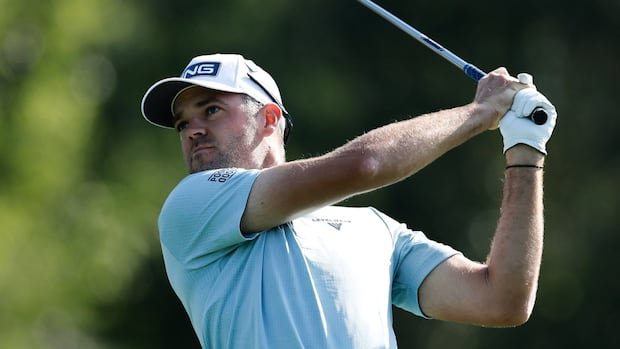Corey Conners was not garnering much attention in the lead-up to the year’s first major but the Canadian announced his presence on Thursday with his best-ever start to a Masters that left him firmly in contention.
The build-up to the Masters focused mainly on defending champion Scottie Scheffler and Rory McIlroy, the world’s two best golfers, but Conners muscled his way into the conversation for at least one day with an opening four-under-par 68, which topped the leaderboard at the time he concluded his round.
That left Conners, who finished inside the top 10 at Augusta National in three consecutive years from 2000-22, in a share of second place, four shots back of first-round leader Justin Rose and level with Scheffler and 2024 runner-up Ludvig Aberg.
Corey Conners is the leader in the clubhouse after birdieing three of his last four holes. <a href=”https://twitter.com/hashtag/themasters?src=hash&ref_src=twsrc%5Etfw”>#themasters</a> <a href=”https://t.co/LrhlEy08s0″>pic.twitter.com/LrhlEy08s0</a>
—@TheMasters
Scheffler is looking to become the youngest with three green jackets since Jack Nicklaus in 1966.
“It’s a golf course that I love coming to. I don’t know how you couldn’t love coming here. It’s a spectacular event, a spectacular golf course,” Conners said.
“Yeah, I feel like the course does suit my eye really well and plays into some of my strengths.”
Conners arrived at the major in solid form after top-10 finishes in four of his nine PGA Tour events this season and looked very comfortable as he made his way around Augusta National.
But Conners, hoping to follow in 2003 winner Mike Weir’s footsteps and become the second Canadian to slip into a Green Jacket, jump-started his round with his next shot when he managed to chip in for par.
“To see that go in, that was great. I was trying hard to get it up-and-down the second time, and it went in,” said Conners. “That was a nice bonus and definitely a momentum builder.”
The 33-year-old Conners stormed up the leaderboard late in his round as he birdied three of his final four holes, including a 24-footer at the 17th that he followed with a 13-footer at the last that caught the left edge of the cup.
There is plenty of golf to be played but Conners likes where he stands and feels comfortable on Augusta National’s notoriously tricky and undulating greens.
“They’re obviously very fast. You don’t need to work too hard to get the ball to the hole. I feel like just the rhythm I have is good,” said Conners.
“I have confidence I’m getting started online, and I was able to hole some nice ones today.”





